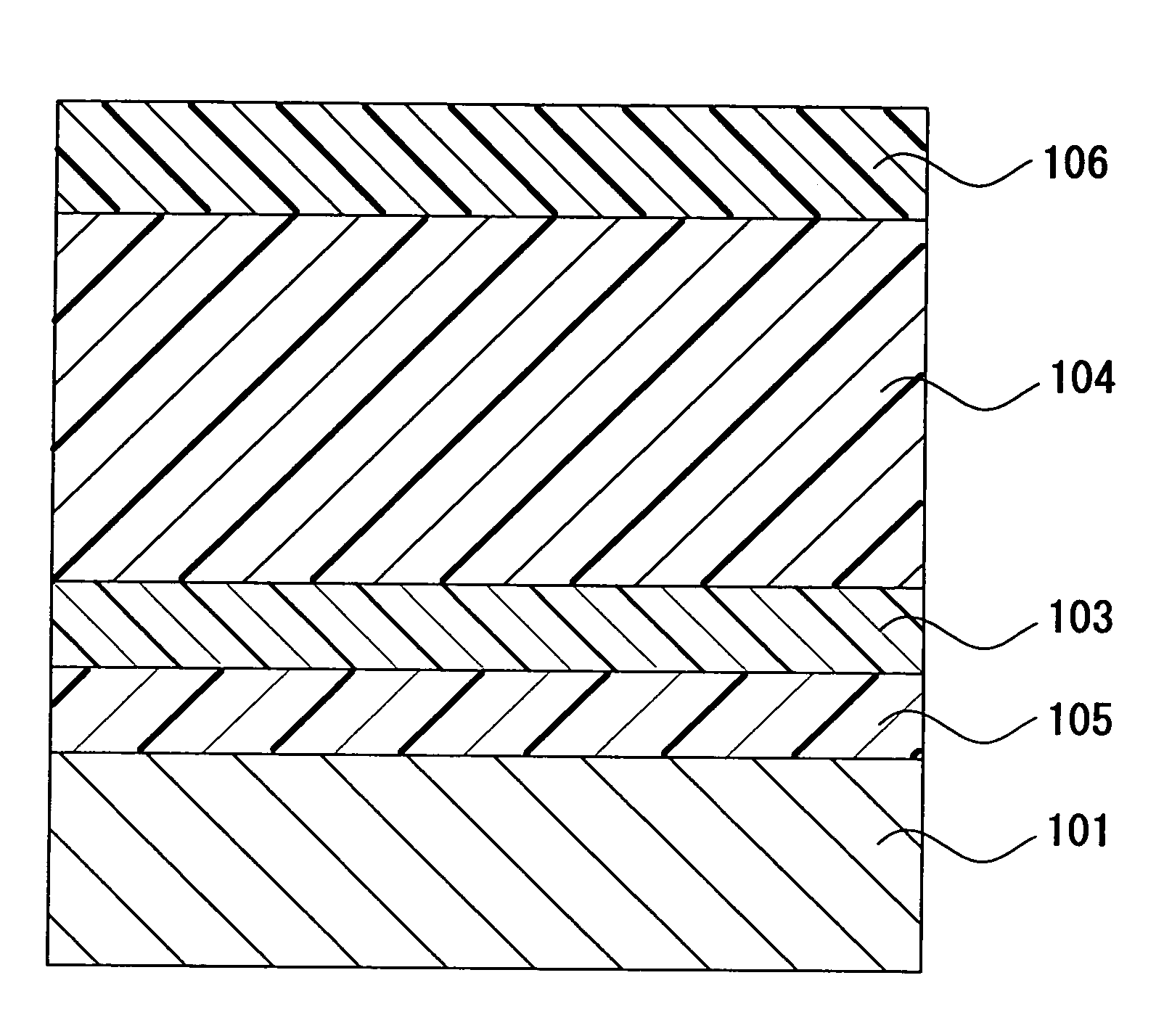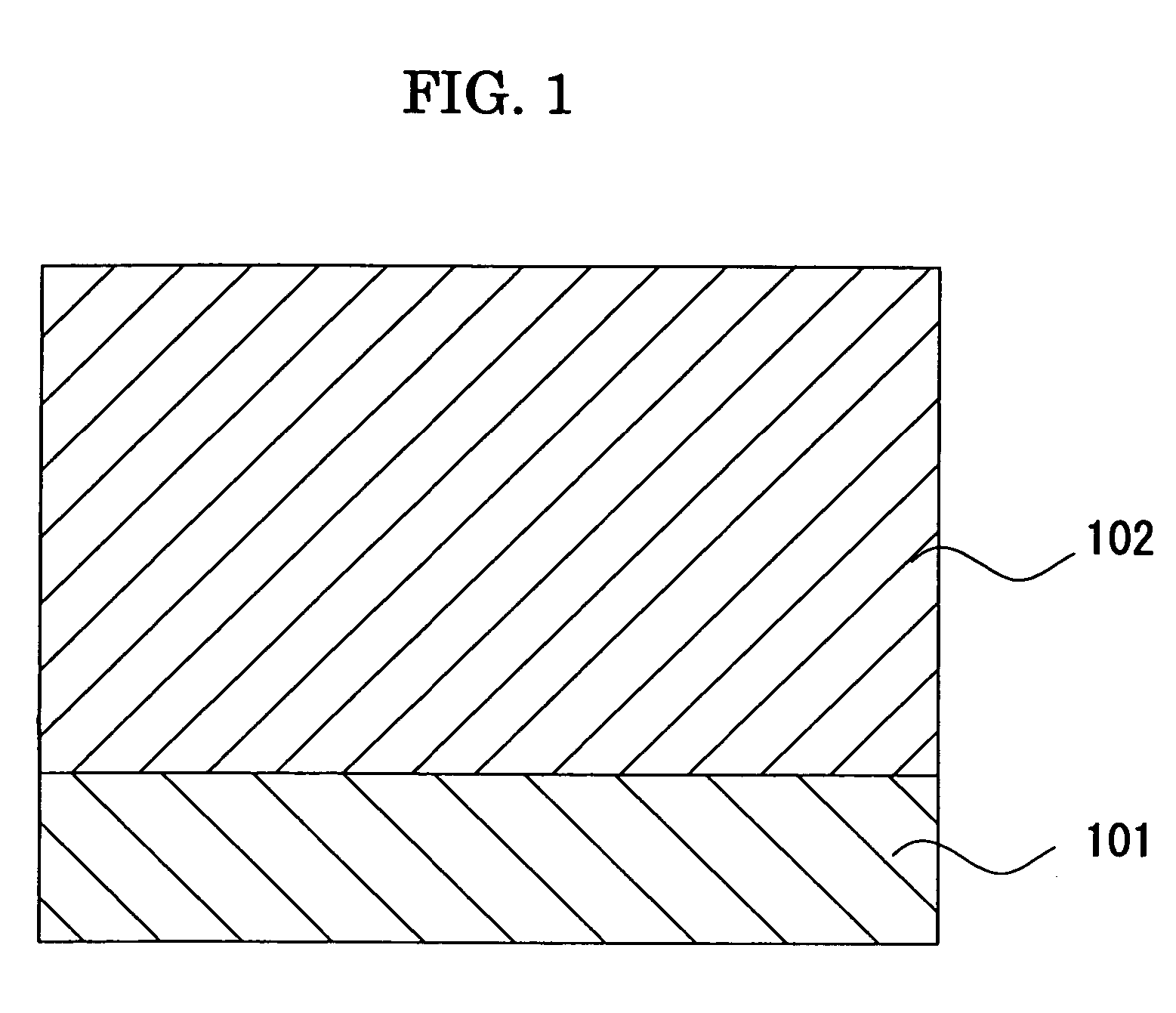Image forming apparatus, image forming process, and process cartridge for image forming apparatus
a technology of image forming apparatus and process cartridge, which is applied in the direction of electrographic process apparatus, instruments, developers, etc., can solve the problems of reducing transfer efficiency, affecting the efficiency of toner surface, and hardly ensuring sufficient temperatures for such toners, etc., so as to reduce the surface energy of the photoconductor surface, reduce the friction coefficient, and prevent the effect of toner surfa
- Summary
- Abstract
- Description
- Claims
- Application Information
AI Technical Summary
Benefits of technology
Problems solved by technology
Method used
Image
Examples
example 1
of Photoconductor Production
[0249]A coating liquid for undercoat layer was prepared as follows: 150 parts of an alkyd resin (Becolite M6401-50, by Dainippon and Chemicals, Co.) and 10 parts of melamine resin (Super Beckamine G-821-60, by Dainippon and Chemicals, Co.) were dissolved into 150 parts of methylethylketone, and titanium oxide powder (Tie Pail CR-EL, by Ishihara Sangyo Co. Ltd.) was added to the solution, then the mixture was subjected to milling for 12 hours to prepare a coating liquid for undercoat layer.
[0250]The coating liquid was coated on an aluminum substrate of 90 mm in diameter by 392 mm in length, and dried at 130° C. for 120 minutes, to form an undercoat layer in 3.5 μm thick.
[0251]Then 4 parts of polyvinylbutyral resin (XYHL, by UCC Co.), having formula (1) shown below, was dissolved into 150 parts of cyclohexane.
[0252]
[0253]Then, 10 parts of bisazo pigment was added to the silution, and was subjected to dispersion by means of a ball moll; then 210 parts of cyc...
example 2
of Photoconductor Production
[0260]Photoconductor 2 was prepared in the same manner as Photoconductor 1, except for changing the resin of formula (A) into the resin of formula (B).
[0261]
Comparative Example 1 of Photoconductor Production
[0262]Comparative Photoconductor 1 was prepared in the same manner as Photoconductor 1, except for changing the resin of formula (A) into the bisphenol Z type polycarbonate resin.
PUM
| Property | Measurement | Unit |
|---|---|---|
| diameter | aaaaa | aaaaa |
| diameter | aaaaa | aaaaa |
| glass transition temperature TB | aaaaa | aaaaa |
Abstract
Description
Claims
Application Information
 Login to View More
Login to View More - R&D
- Intellectual Property
- Life Sciences
- Materials
- Tech Scout
- Unparalleled Data Quality
- Higher Quality Content
- 60% Fewer Hallucinations
Browse by: Latest US Patents, China's latest patents, Technical Efficacy Thesaurus, Application Domain, Technology Topic, Popular Technical Reports.
© 2025 PatSnap. All rights reserved.Legal|Privacy policy|Modern Slavery Act Transparency Statement|Sitemap|About US| Contact US: help@patsnap.com



